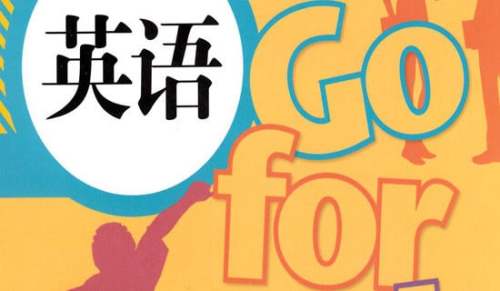- 相關(guān)推薦
2017年6月英語(yǔ)四級(jí)翻譯預(yù)測(cè)
2017年6月英語(yǔ)四級(jí)考試將在6月17日上午進(jìn)行,你準(zhǔn)備的怎么樣了?下面小編為大家整理了一些2017年6月英語(yǔ)四級(jí)翻譯預(yù)測(cè)及譯文,希望可以為大家?guī)?lái)幫助。建議先收藏。

中國(guó)國(guó)畫(huà)
中國(guó)國(guó)畫(huà)的根源可以追溯到新石器時(shí)代的陶器(Neolithic pottery),比如魚(yú)、青蛙、鹿、鳥(niǎo)、花、樹(shù)葉的形狀。最早的中國(guó)漢字是象形文字(pictograph)。由于相似的工具被使用于最早期的繪畫(huà)和書(shū)寫(xiě),繪畫(huà)被認(rèn)為是與書(shū)法(calligraphy)有著相同的起源。這樣一來(lái),中國(guó)國(guó)畫(huà)就有著一種非凡的特征,也就是說(shuō),詩(shī)意和書(shū)法被印刻(inscribe)在畫(huà)中,從而三者合為一體.給人們一種更加強(qiáng)烈的美的享受。
參考譯文
The roots of Chinese painting can be traced back to paintings on Neolithic pottery,such as figures of fish,frogs,deer,birds,flowers and tree leaves.The earliest Chinese characters were pictographs.Since similar tools were used for the earliest painting and writing,painting is said to have the same origin as calligraphy.Thus,Chinese painting has an outstanding characteristic,that is to say.poetry or calligraphy are inscribed on paintings so that the three are integrated,giving people a keener enjoyment of beauty.
難點(diǎn)注釋
1.第一句中,“追溯到”還可以譯為date back to或go back to。
2.第三句中,“被使用于”含被動(dòng)含義,且此處表達(dá)過(guò)去的情況,故譯為 were used for;“被認(rèn)為是”還可以譯為is deemed to或is considered to。
3.第四句中,“這樣一來(lái)”還可以譯為therefore;“也就是說(shuō)”還可以譯為in other words;“三者合為一體”應(yīng)該使用被動(dòng)語(yǔ)態(tài)結(jié)構(gòu),可譯為the three are integrated;“給人們一種更加強(qiáng)烈的美的享受”為結(jié)果狀語(yǔ),故用現(xiàn)在分詞結(jié)構(gòu)作狀語(yǔ),可譯為giving people a keener enjoyment of beauty。
發(fā)展學(xué)前教育
中國(guó)通過(guò)運(yùn)動(dòng)員(mobilize)全社會(huì)的資源來(lái)發(fā)展學(xué)前教育。雖然當(dāng)?shù)卣畷?huì)開(kāi)辦幼兒園,但也鼓勵(lì)單位團(tuán)體、社會(huì)組織以及個(gè)人去開(kāi)辦幼兒園。幼兒園采用將兒童保育和教育相結(jié)合的原則,并且保證幼兒得到體力、智力、道德和美學(xué)的(aesthetic)全方位發(fā)展。讓玩耍成為活動(dòng)的主要形式,幼兒園創(chuàng)造了一個(gè)適于學(xué)習(xí)的良好環(huán)境,并且給嬰幼JL4f3提供機(jī)會(huì)和條件來(lái)練習(xí)和展現(xiàn)他們的才能。
參考譯文
China develops its preschool education by mobilizing the resources of the whole society. While local governments run kindergartens, work units, social organizations and individuals are also encouraged to open kindergartens. Kindergartens apply the principle of combining child care with education,and ensure山at the infants achieve all.round physical.intellectual,moral and aesthetic development.With play as the basic form of activity,kindergartens create a good environment for learning and provide the infants with opportunities and conditions to exercise and display their abilities.
難點(diǎn)注釋
1.第一句中,句子主干是“中國(guó)發(fā)展學(xué)前教育”,“通過(guò)……”翻譯為介詞短 語(yǔ);“學(xué)前教育”可譯為preschool education;“全社會(huì)的資源”可譯為the resources of the whole society。
2.第二句中,“雖然”還可以用although來(lái)表達(dá);為避免重復(fù),“開(kāi)辦幼兒園”分別譯為了run kindergartens和open kindergartens。
3.第三句中,“采用……的原則”可譯為apply the principle of;“將兒童保育 和教育相結(jié)合”可譯為combining child care with education。
4.第四句中,“適于學(xué)習(xí)的良好環(huán)境”可以用a good environment for learning 來(lái)表達(dá);“給……提供……”可譯為provide…with…;“練習(xí)和展現(xiàn)他們 的才能”可譯為exercise and display their abilities。
分盛食物
在中國(guó),食物是用大的公用盤(pán)子(communal plate)來(lái)盛裝的,而且基本上都會(huì)提供公用的筷子來(lái)將食物從公用的盤(pán)子里弄到你自己的盤(pán)子里。如果有公用的筷子就用公共的筷子來(lái)分開(kāi)食物。如果沒(méi)有,或是不確定有沒(méi)有,你可以先等一等,看其他人是怎么做的,然后效仿就行。有時(shí)候熱心的中國(guó)主人會(huì)幫你將食物分到你的碗里,這很正常。
參考譯文
In China.the food is served via large communal plates.and in nearly every case.you will be supplied with communal chopsticks for transferring food from the main plates to your own.You should use the communal chopsticks if they are supplied.If they are not or you are unsure,wait for someone to serve food to their own plates.and then copy what they do.0n occasion.it is normal for an eager Chinese host to place food into your bowl.
難點(diǎn)注釋
1.第一句中,“是用……來(lái)盛裝的”是被動(dòng)語(yǔ)態(tài)結(jié)構(gòu),可譯為is served via…;“公用的筷子”可譯為communal chopsticks;“從公用的盤(pán)子里弄 到你自己的盤(pán)子里”可譯為transferring food from the main plates to your own。
2.第二句中,“如果有公用的筷子”可以譯為there be句型,但用“筷子”作
主語(yǔ),采用被動(dòng)語(yǔ)態(tài)結(jié)構(gòu)更恰當(dāng),可譯為if they are supplied。
3.第三句中,“效仿”指的是效仿他們所做的事情,要將賓語(yǔ)補(bǔ)充完整,可 譯為copy what they do。
4.第四句中,“這很正常”通常譯為it.句型,可譯為it is normal for sb.to do sth.;“將食物分到你的碗里”可譯為place food into your bowl。
泡茶飲茶
In China,it is necessary to serve tea to visitors.You call ask them about what kind of tea they fancy most in advance so as to serve them with the most appropriate tea set.In the course of serving tea,the host should take careful note of how much water remaining in the kettle and in the cups of the guests.Usually. boiling water should be added after half of the cup has been consumed.and thus the cup is kept filled so that the tea retains the same concentration and remains pleasantly warm throughout the entire course of tea-drinking.Snacks,sweets and other dishes may be served at tea time to complement the fragrance of the tea and to allay one’s hunger.
難點(diǎn)注釋
1.第一句中,“當(dāng)有客人來(lái)訪時(shí)”可以譯為when there’re visitors,但比較啰嗦,不如直接譯為visitors簡(jiǎn)練;“泡茶是必不可少的”可用it-句型,其中it作形式主語(yǔ),可譯為it is necessary to…。
2.第二句中,“最喜歡喝什么茶”作“詢(xún)問(wèn)”的賓語(yǔ),可譯為what kind of tea they fancy most;“以便”還可譯為in order to(do),with the aim of(doing),for the purpose of(doing)。
3.第三句中,“在陪伴客人飲茶時(shí)”指的是飲茶的過(guò)程,所以譯為In the course of serving tea;“茶水剩余量”可譯為how much water remaining。
4.第四句中,“添加茶水”使用被動(dòng)語(yǔ)態(tài)結(jié)構(gòu),用“茶水”作主語(yǔ),可譯為boiling water should be added;“隨喝隨添”指的是保持茶杯是滿的,所以譯為the cup is kept filled。
5.第五旬中,“調(diào)節(jié)口味”指的是用點(diǎn)心、糖果、菜肴等來(lái)補(bǔ)充茶的香味,可譯為complement the fragrance of the tea;“緩解饑餓感”可譯為allay one’s hunger。
【6月英語(yǔ)四級(jí)翻譯預(yù)測(cè)】相關(guān)文章:
英語(yǔ)四級(jí)翻譯考試預(yù)測(cè)題09-08
2017下半年英語(yǔ)四級(jí)翻譯預(yù)測(cè):孫悟空09-04
英語(yǔ)四級(jí)作文預(yù)測(cè):健康10-27
英語(yǔ)四級(jí)翻譯素材09-05
英語(yǔ)四級(jí)翻譯詞匯10-01
英語(yǔ)四級(jí)翻譯練習(xí)08-08
四級(jí)英語(yǔ)翻譯技巧06-25
英語(yǔ)四級(jí)的翻譯技巧09-07
英語(yǔ)四級(jí)常用翻譯詞匯精選09-28
英語(yǔ)四級(jí)翻譯考試備考11-02